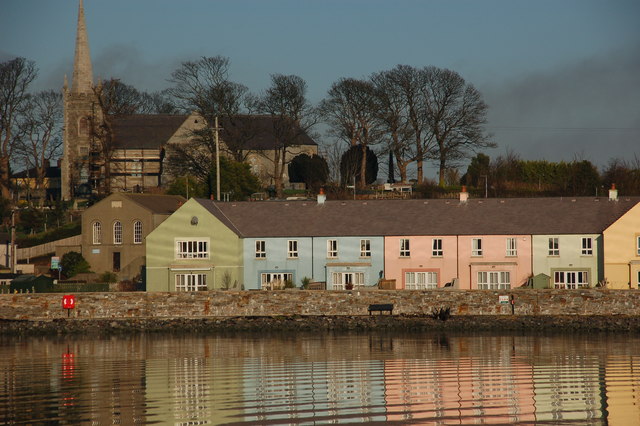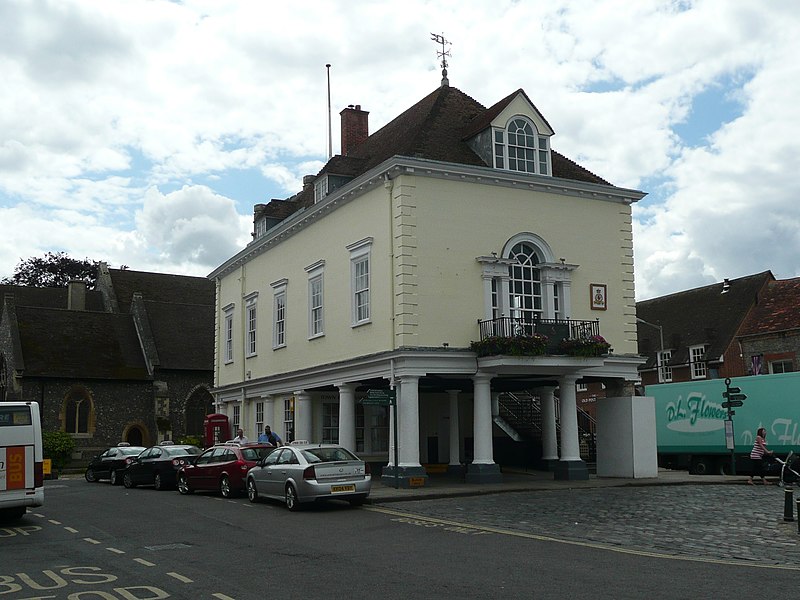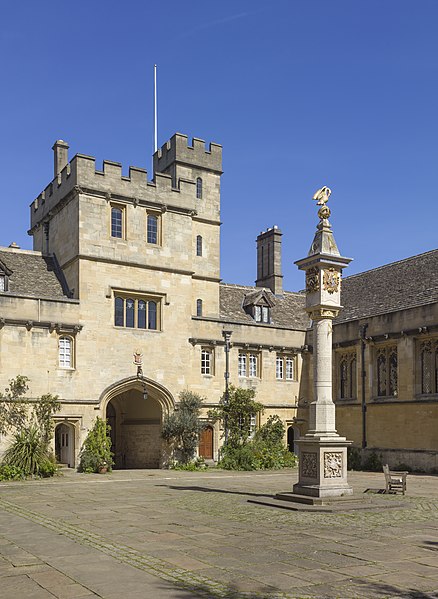In a country where the pub forms such an important part of
everyday life, it is no surprise to learn that there are a host of such
establishments with film, TV and literary associations. With Spring around the corner, why not get
out and discover some of them. The
following is just a selection; if you know of any others, why not share them
via the comments.
Askrigg, North
Yorkshire: The Kings Arms
In 1978 the popular drama All Creatures Great and Small
arrived on our TV screens, set in 1940s Yorkshire, based on the books by
real-life vet James Herriot, and featuring a trio of vets sharing a practice in
a picturesque Yorkshire Dales village.
A
number of different Dales locations were used for the filming, but the pub
frequented by the vets, The Drovers Arms in Darrowby in the series, was
actually the
Kings Arms in the lovely village of Askrigg.
There are photographs inside the pub taken
during the filming of the series.
For
those who want to immerse themselves overnight in the Herriot experience, the
pub does not offer accommodation, however Skeldale House just down the road,
which acted as the frontage of the vets practice in the series, is a bed and
breakfast.
Banff, Aberdeenshire:
The Ship Inn
The heartwarming 1983 film Local Hero, about a small
Scottish community called Ferness which was tempted by oil riches, was largely
filmed in the village of Pennan in Aberdeenshire.
However, the interior of the local pub
frequented by villagers and American visitors alike, called the Macaskill Arms
in the film, was filmed in
The Ship Inn in Banff, also in Aberdeenshire.
The exterior shots were filmed in Pennan
itself, with ordinary buildings providing the basis for the facade.
Another pub, the
Lochailort Hotel far away in
Morar (currently closed), was also used for some of the interior scenes.
All this has not prevented Pennan’s real-life
local, the
Pennan Inn, from cashing in on the film’s fame.
The inn, which is located opposite the red
phone box which played a pivotal role in the story, has a plaque on the wall
commemorating the film.
Bolventor, Cornwall:
Jamaica Inn
Jamaica Inn is Daphne du Maurier’s story of a young woman
who, following her mother’s death, is forced to go and live with her aunt and
drunken uncle in the creepy Jamaica Inn, perched on the wild, windswept
moorlands of Cornwall’s interior.
The story
was recently serialised for television, attracting widespread derision for the
mumbling Cornish accents issuing forth from the actors’ mouths.
The inn of the title actually exists in real
life; it used to stand right next to the A30, but improvements to the main
artery whisking tourists into Cornwall left it slightly adrift, necessitating a
turnoff from the road – just follow the brown tourist sign.
Overnight accommodation is available at the
inn – not for the fainthearted, since it has been the scene of many paranormal
activities over the years, not surprisingly given the inn’s past as a
smugglers’ haunt, which no doubt led to a number of murders.
The main resident ghost is said to be that of
a traveller who stepped outside in the middle of his pint and was found dead on
the moor the next day.
Footsteps heard
along the passage leading to the bar are believed to be that of the ill-fated
visitor returning to finish his ale.
 |
| Jamaica Inn - geograph.org.uk - 462626. Photo by Kenneth Allen, via Wikimedia Commons. |
|
Bristol: The Hole In
The Wall
Long John Silver in Robert Louis Stephenson’s Treasure
Island, surely the ultimate stereotype of the
pirate-with-a-West-Country-accent, was the landlord of The Spyglass Inn in the
novel.
The story’s narrator, Jim
Hawkins, had orders to meet him there and when he arrived he realised with
horror that the pub landlord had only one leg.
There are many pubs claiming to be the inspiration for The Spyglass Inn,
but the one most closely matching the description is
The Hole In The Wall in
Bristol, not least because it has a spy-hole feature which was used to keep a
look-out for the press gang, and it occupies a quayside position in line with
the fictional pub.
Centrally located
near Queen Square and the Arnolfini Gallery, the real-life pub continues to
serve up food and drink to hungry and thirsty Bristolians and visitors.
Denton, Kent: The
Jackdaw Inn
The wartime classic The Battle of Britain, released in 1969,
is full of wonderful vintage scenes depicting the lifestyles of wartime
Britain.
One of them features a pub
where Squadron Leader Colin Harvey (Christopher Plummer) meets his screen wife
(Susannah York).
The scene was filmed in
Kent in
The Jackdaw Inn , Denton.
Wartime
memories live on in the pub with lots of wartime RAF memorabilia and vintage
posters such as the one declaring “Don’t Help the Enemy! Careless Talk May Give
Away Vital Secrets”, a poster which can be seen in the background in the
film.
The pub used to be called The Red
Lion, but it was renamed in 1962 because the Whitbread brewery felt there were
too many pubs in the area with the same name.
Goathland: The
Goathland Hotel
Heartbeat is a British TV series set in the 1960s in North
Yorkshire, starring Nick Berry as PC Nick Rowan, which was shown between 1991
and 2009.
The filming of the series was
centred around the village of Goathland,which lies on the Whitby to Pickering
North Yorkshire Moors Railway line.
The
local pub which featured in the story was the Aidensfield Arms, which was
depicted by the
Goathland Hotel.
The
filming entailed the rebuilding of the interior of the bar as well as using the
exterior for outside shots.
 |
| The Goathland Hotel (Aidensfield Arms) - geograph.org.uk - 685503. Photo by Nicholas Mutton, via Wikimedia Commons. |
|
London: The Grapes
Located at 76 Narrow Street, Limehouse,
this inn was
originally The Bunch of Grapes, built in 1583.
Its main literary claim to fame is that it was frequented by Charles
Dickens.
In fact the opening sentences
of Our Mutual Friend are believed to refer to it, describing it as “a tavern of
dropsical appearance” in a “state of hale infirmity”.
Dickens went on to describe the inn’s
waterside location as akin to “a faint-hearted diver, who has paused so long on
the brink that he will never go in at all”.
The pub has a venerable history, particularly from the Elizabethan era,
when Sir Walter Raleigh set sail on his third voyage to the New World from the
river just below.
The present-day pub,
now owned by the actor Sir Ian McKellen, has a small balcony overlooking the
river, and Dickens fans will find a complete set of his works in the back
parlour.
Newcastle Upon Tyne:
The Victoria Comet
The premises now occupied by the
Victoria Comet in Newcastle
played a starring role in the 1972 Geordie gangster classic Get Carter starring
Michael Caine, so much so that it is commonly referred to as the ‘Get Carter
pub’.
When the venue started out as a
pub in the 1800s, it was actually two pubs, The Victoria and The Comet, which
later became a hotel known as The Victoria and Comet.
After a spell as a branch of O’Neills, it was
revamped and renamed The Victoria Comet in a nod to its past, with posters
depicting scenes from the film on the walls.
In the film the Caine character Jack Carter, following his arrival by
train at the city’s main station, fetches up at the pub, where a young Alun
Armstrong is serving behind the bar.
Allegedly
some of the pub regulars were given roles as extras in the film and they took
to their parts a bit too enthusiastically, including the imbibing of real beer,
bringing them to various states of inebriation.
New Quay: The Black
Lion
High up above the harbour of this charming small resort on
the coast of Ceredigion,
The Black Lion boasts lovely views from its large
garden.
In the mid-1940s the Welsh poet
Dylan Thomas moved into Majoda, a house in an idyllic setting on the clifftop just outside the town.
It is a well-known fact that
drinking was one of Thomas’ favourite pursuits, and The Black Lion was his
favourite pub in New Quay.
The Dylan
Restaurant in the basement has a large amount of Dylan Thomas memorabilia
displayed on the walls.
Across the road
from the pub is Gomer House, the former home of Captain Tom Polly, who was the
inspiration for Captain Cat, the blind sea captain in Under Milk Wood.
Oxford: The Eagle and
Child
Set among the venerable college buildings of Oxford
University, the
Eagle and Child was once a favourite haunt of J. R. R. Tolkien
of The Hobbit fame.
He used to visit the
pub as part of a group of writers called the Inklings, which also included C.
S. Lewis.
Tolkien and Lewis were both
at the English Faculty at the University.
Built in the mid-1600s, the pub’s name is said to have come from the
crest of the Earl of Derby, which has an image of a baby in an eagle’s nest.
The pub recalls its literary past with photos
on the wall and a plaque commemorating the Inklings.
(Postscript: The Eagle and Child is currently closed, but is expected to reopen in a new guise at some point.)
Slad, Gloucestershire: The Woolpack
With a beer terrace overlooking a beautiful valley in the
southern Cotswolds, the interior of the
Woolpack Inn in Slad looks as though it
has never changed over the years, and certainly not since the times when local
literary celebrity the late Laurie Lee used to prop up the bar here.
Slad was Lee’s home village, and his most
famous work Cider With Rosie delightfully conjures up what comes across as an
idyllic childhood.
After he married his
wife Kathy, the couple made their home in a house just across the road.
The pub, which gets a mention in Cider With
Rosie, has pictures of Laurie Lee on the walls, and there is a beer produced by
the local Uley brewery named after him.
Fans of the writer who visit the pub for a pint can raise a glass to him
while glancing up the road to the Church of Holy Trinity, where he is buried in
the graveyard.
 |
| The Woolpack, Slad. |
Whitstable: The Old
Neptune
Perched precariously on Whitstable’s shingle beach, the
Old Neptune – or Neppy as it is affectionately called by the locals – is in prime
position for admiring the town’s legendary sunsets.
In 2006 Peter O’Toole, in a rather frail
state from a broken hip, starred in the film Venus as a veteran actor, and some
of the filming took place in the Neppy.
O’Toole
was
nominated for an Oscar for the role,
but he was beaten to it by Forest Whitaker as Idi Amin.
The pub was taken over for the whole day for
filming, but the crew finished early and O’Toole bought the entire pub a round
of drinks before leaving.
 |
| The Old Neptune, Whitstable. |
























